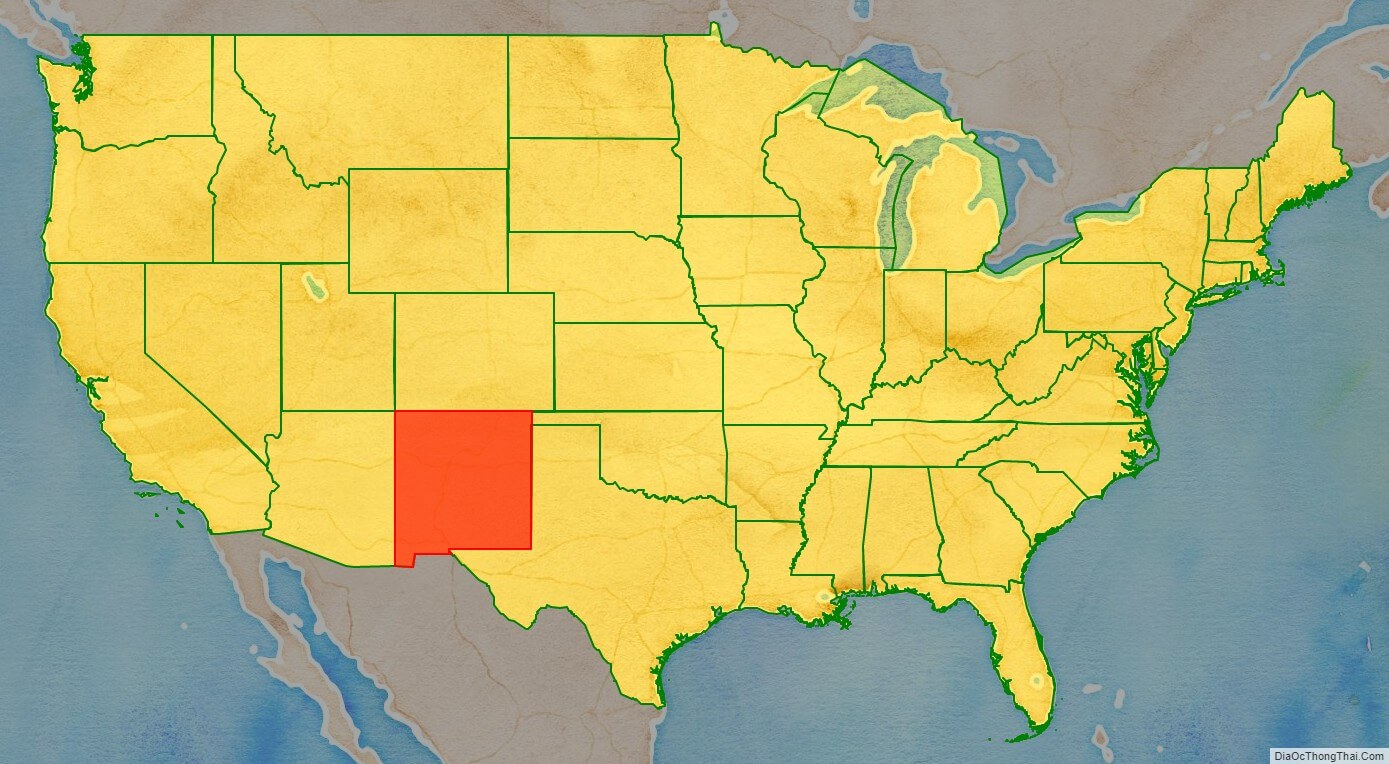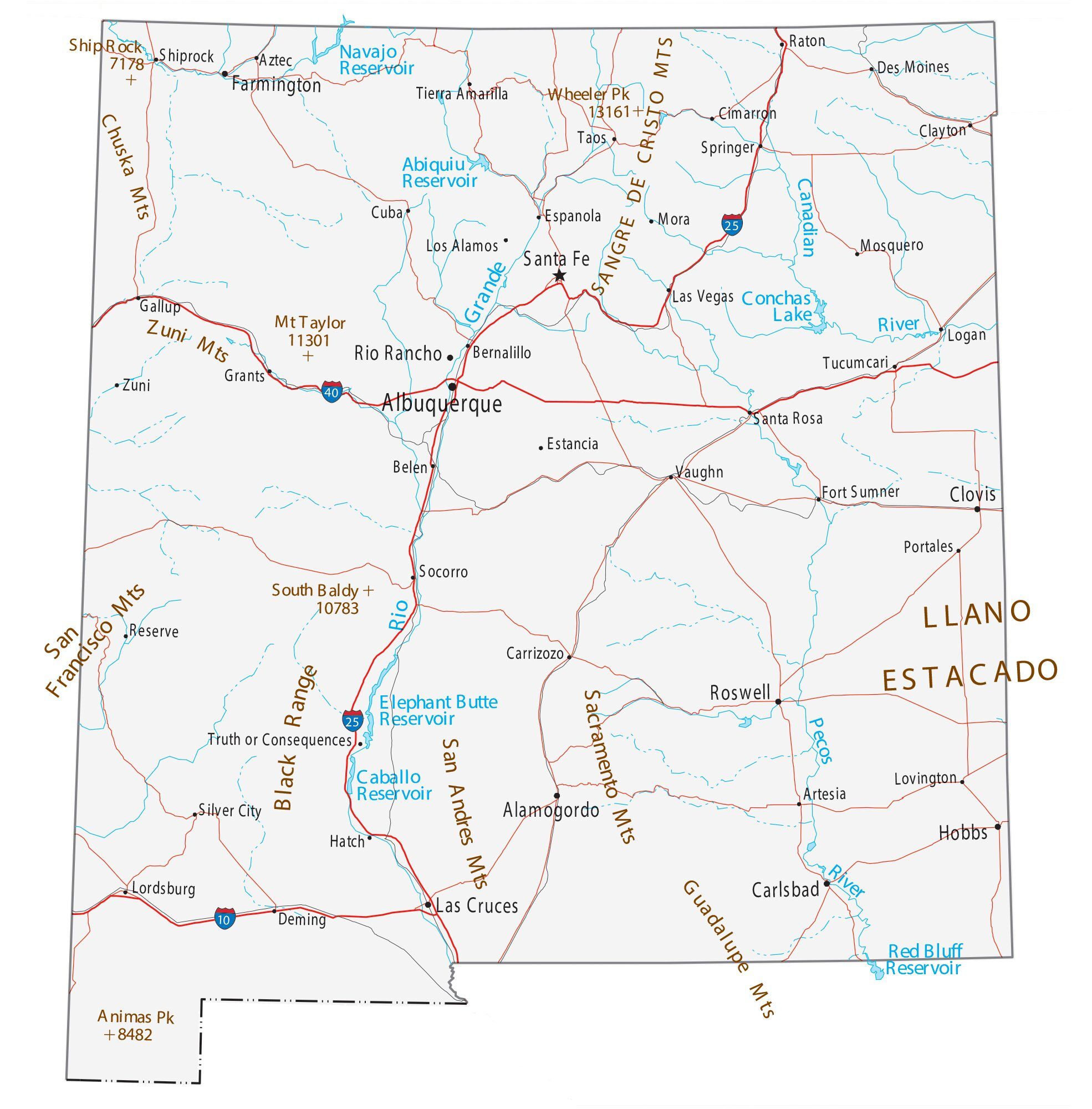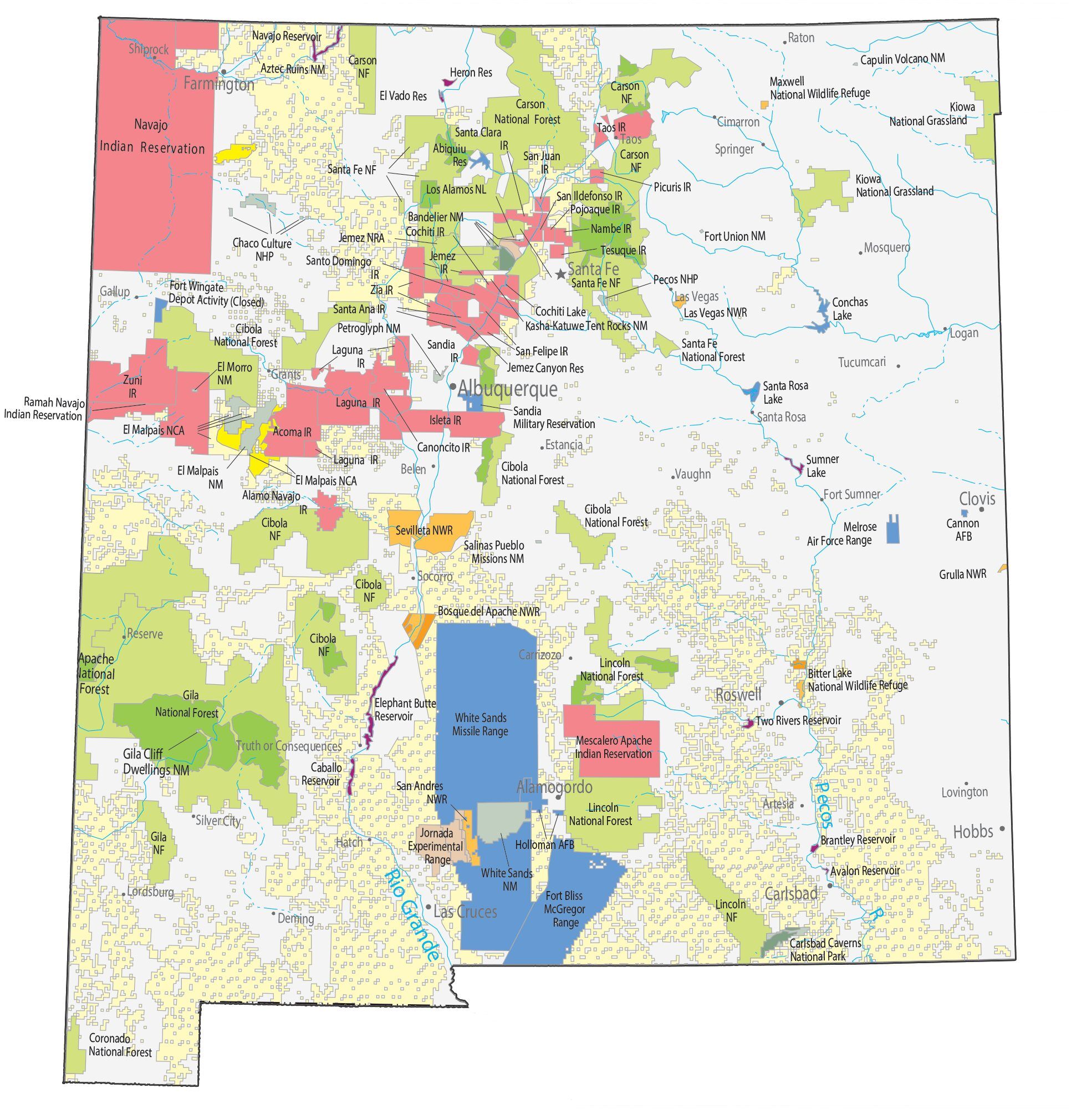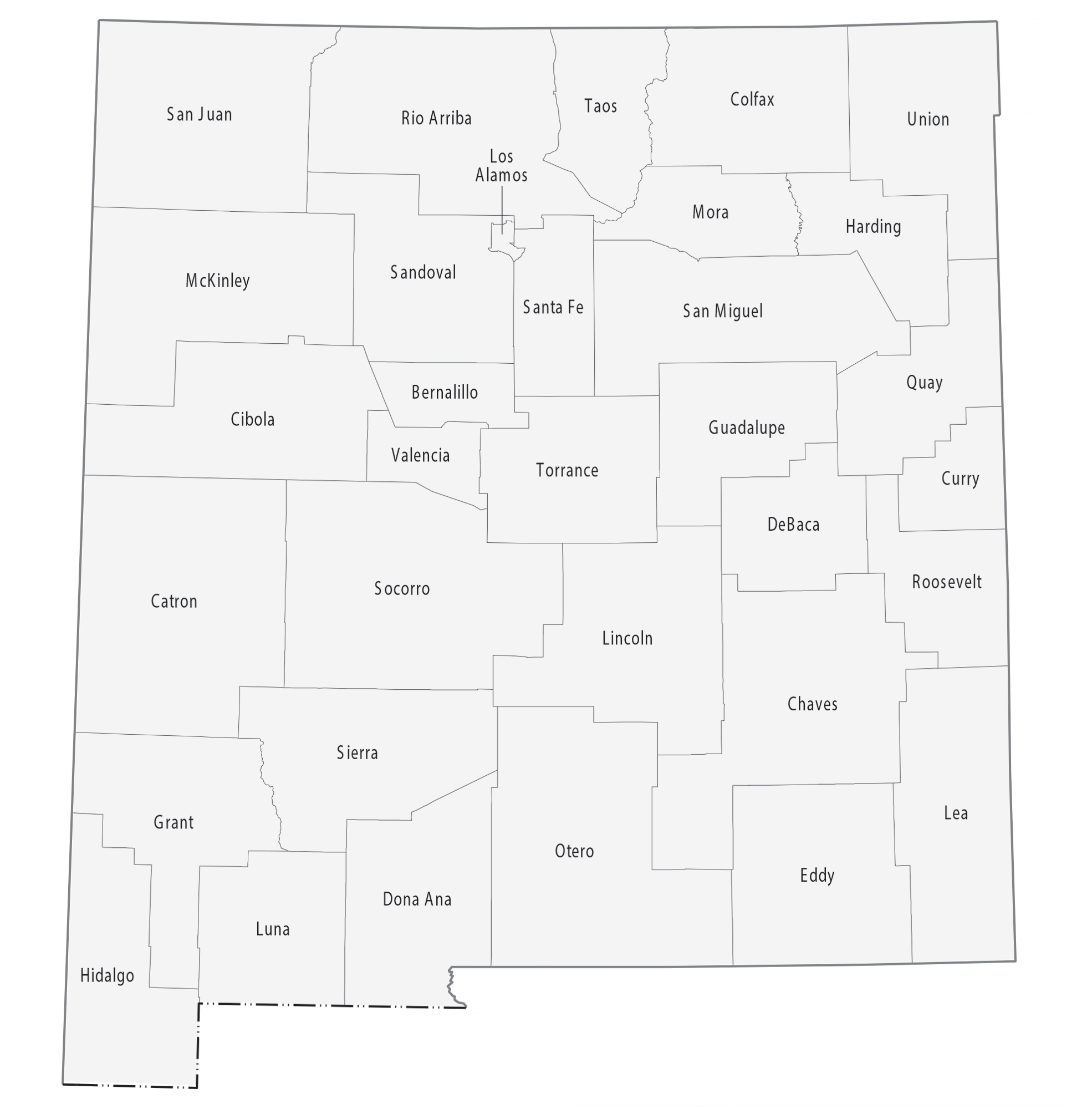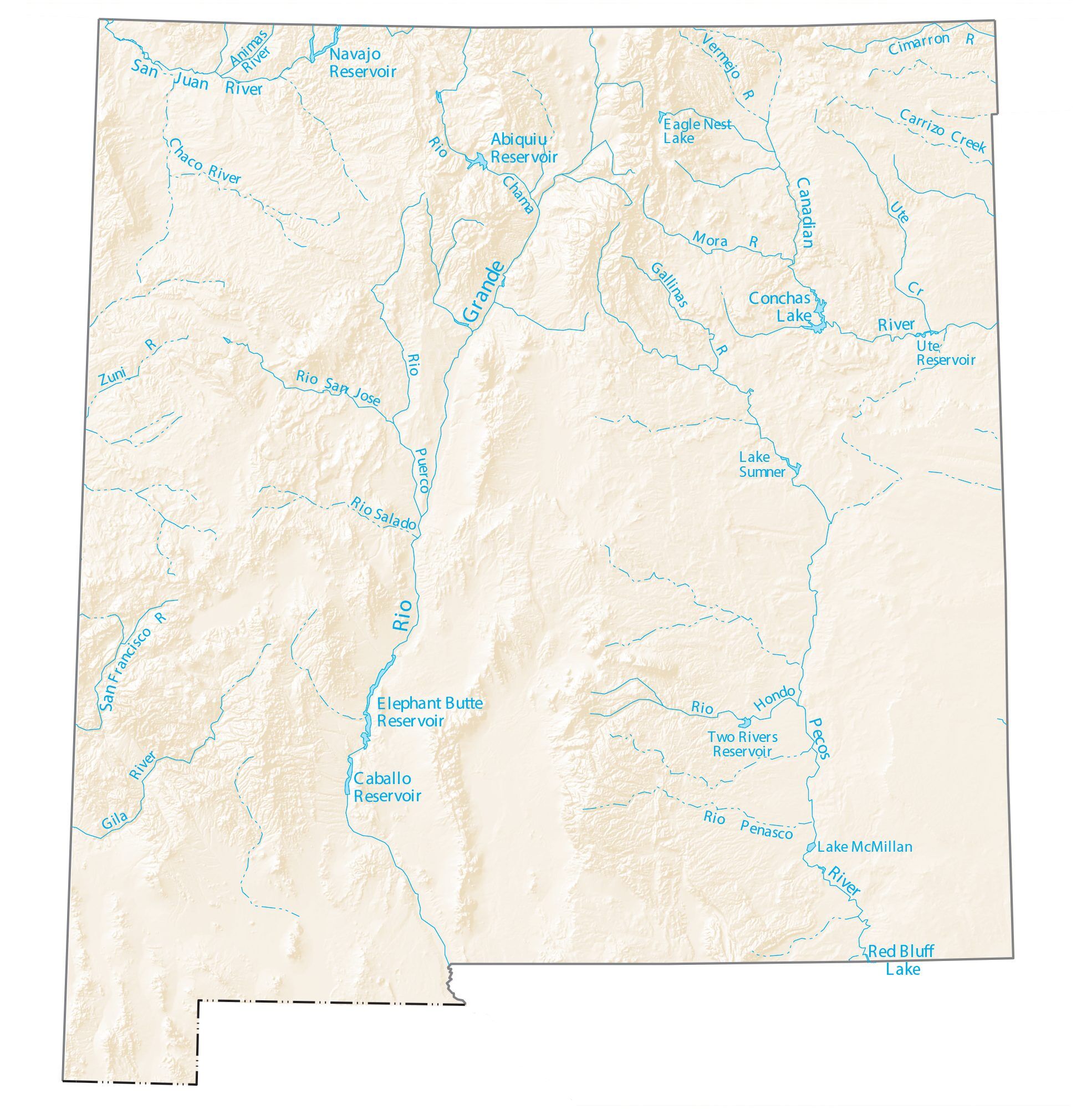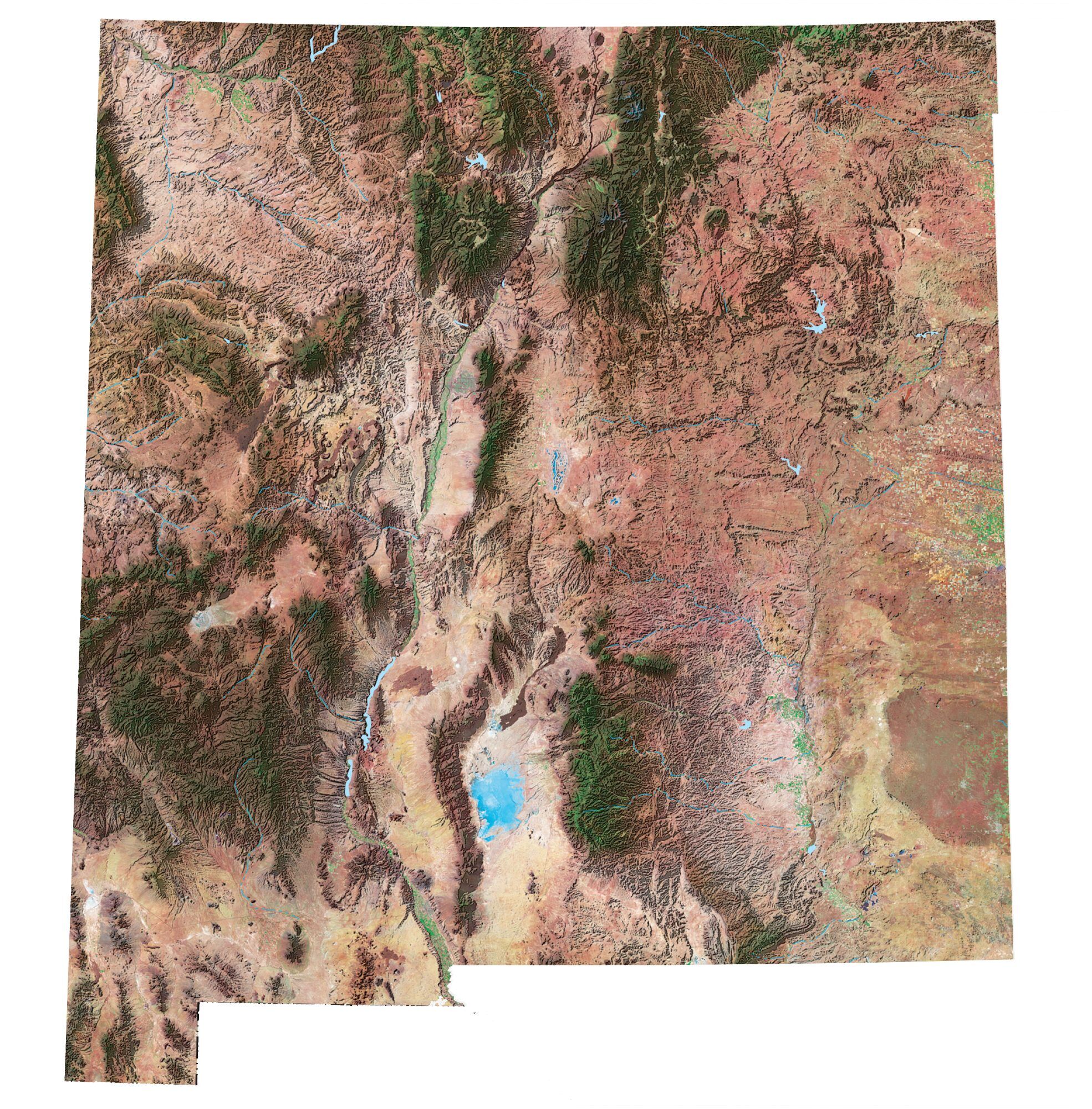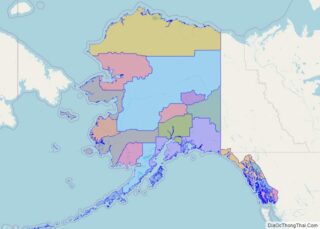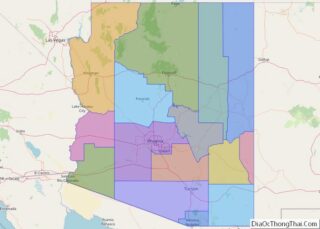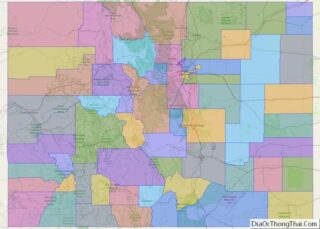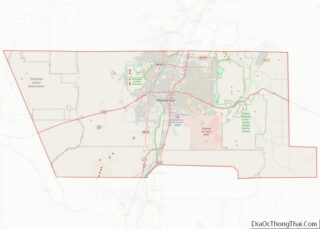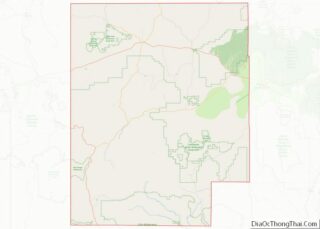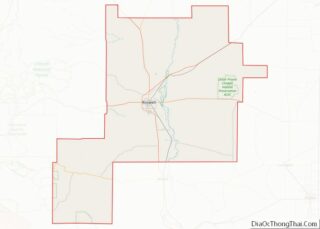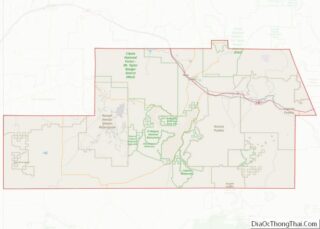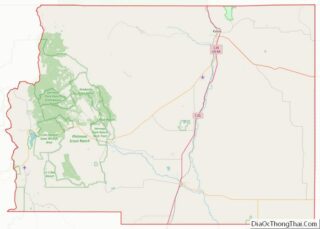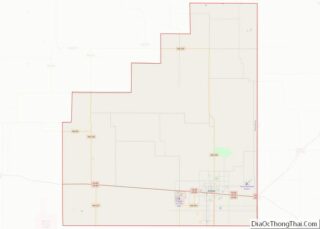New Mexico (Spanish: Nuevo México [ˈnweβo ˈmexiko] (listen); Navajo: Yootó Hahoodzo Navajo pronunciation: [jòːtʰó hɑ̀hòːtsò]) is a state in the Southwestern United States. It is one of the Mountain States of the southern Rocky Mountains, sharing the Four Corners region of the western U.S. with Utah, Colorado, and Arizona, and bordering Texas to the east and southeast, Oklahoma to the northeast, and the Mexican states of Chihuahua and Sonora to the south. New Mexico’s largest city is Albuquerque, and its state capital is Santa Fe, which is the oldest state capital in the U.S., having been founded in 1610 as the government seat of Nuevo México in New Spain.
New Mexico is the fifth-largest of the fifty states, but with just over 2.1 million residents, ranks 36th in population and 46th in population density. Its climate and geography are highly varied, ranging from forested mountains to sparse deserts; the northern and eastern regions exhibit a colder alpine climate, while the west and south are warmer and more arid. The Rio Grande and its fertile valley runs from north-to-south, creating a riparian climate through the center of the state that supports a bosque habitat and distinct Albuquerque Basin climate. One–third of New Mexico’s land is federally owned, and the state hosts many protected wilderness areas and national monuments, including three UNESCO World Heritage Sites, the most of any state.
New Mexico’s economy is highly diversified, including cattle ranching, agriculture, lumber, scientific and technological research, tourism, and the arts, especially textiles and visual arts. The state has significant sectors in mining, oil and gas, aerospace, media, and film. Its total gross domestic product (GDP) in 2020 was $95.73 billion, with a GDP per capita of roughly $46,300. State tax policy is characterized by low to moderate taxation of resident personal income by national standards, with tax credits, exemptions, and special considerations for military personnel and favorable industries. Due to its large area and economic climate, New Mexico has a significant U.S. military presence, including White Sands Missile Range, and strategically valuable federal research centers, such as Sandia and Los Alamos National Laboratories. The state hosted several key facilities of the Manhattan Project, which developed the world’s first atomic bomb, and was the site of the first nuclear test, Trinity.
In prehistoric times, New Mexico was home to Ancestral Puebloans, Mogollon, as well as ancestors of the Comanche and Ute people. Navajos and Apaches entered the state towards the end of the 15th century. Spanish explorers and settlers arrived in the 16th century from present-day Mexico, naming the territory Nuevo México after the Aztec legends about the Pueblos of Yancuic Mexihco, a new Mexico, which evolved into the stories of the Seven Cities of Gold. Isolated by its rugged terrain and the relative dominance of its indigenous people, New Mexico was a peripheral part of the viceroyalty of New Spain. Following Mexican independence in 1821, it became an autonomous region of Mexico, albeit increasingly threatened by the centralizing policies of the Mexican government, culminating in the Revolt of 1837; at the same time, the region became more economically dependent on the United States. At the conclusion of the Mexican–American War in 1848, the U.S. annexed New Mexico as part of the larger New Mexico Territory. It played a central role in U.S. westward expansion and was admitted to the Union as the 47th state on January 6, 1912.
New Mexico’s history has contributed to its unique demographic and cultural character. One of only six majority-minority states, it has the nation’s highest percentage of Hispanic and Latino Americans and the second-highest percentage of Native Americans after Alaska. New Mexico is home to part of the Navajo Nation, 19 federally recognized Pueblo communities, and three different federally recognized Apache tribes. Its large Hispanic population includes Hispanos, who descend from Oasisamerican groups and settlers of Nuevo México in New Spain, as well as later groups of Mexican Americans since the 19th century. The New Mexican flag, which is among the most recognizable in the U.S., reflects the state’s eclectic origins, bearing the scarlet and gold coloration of the Spanish flag along with the ancient sun symbol of the Zia, a Puebloan tribe. The confluence of indigenous, Hispanic (Spanish and Mexican), and American influences is also evident in New Mexico’s unique cuisine, music genre, and architectural styles.
| Before statehood: | Nuevo México (1598–1848) New Mexico Territory (1850–1912) |
|---|---|
| Admitted to the Union: | January 6, 1912 (47th) |
| Capital: | Santa Fe |
| Largest city: | Albuquerque |
| Largest metro and urban areas: | Tiguex |
| Elevation: | 5,701 ft (1,741 m) |
| Total Area: | 121,591 sq mi (314,915 km) |
| Area Rank: | 5th |
| Total Population: | 2,117,522 |
| Population Rank: | 36th |
| Population Density: | 17.2/sq mi (6.62/km) |
| Population Density Rank: | 45th |
| Median Household Income: | $51,945 |
| Income Rank: | 45th |
| Demonym(s): | New Mexican (Spanish: Neomexicano, Neomejicano, Nuevo Mexicano) |
| USPS abbreviation: | NM |
| ISO 3166 code: | US-NM |
| Website: | www.newmexico.gov |
Online Interactive Map
Click on ![]() to view map in "full screen" mode.
to view map in "full screen" mode.
New Mexico location map. Where is New Mexico state?
New Mexico Road Map
New Mexico Map – Roads & Cities
New Mexico Street Map
New Mexico State Map – Places and Landmarks
New Mexico Political Map
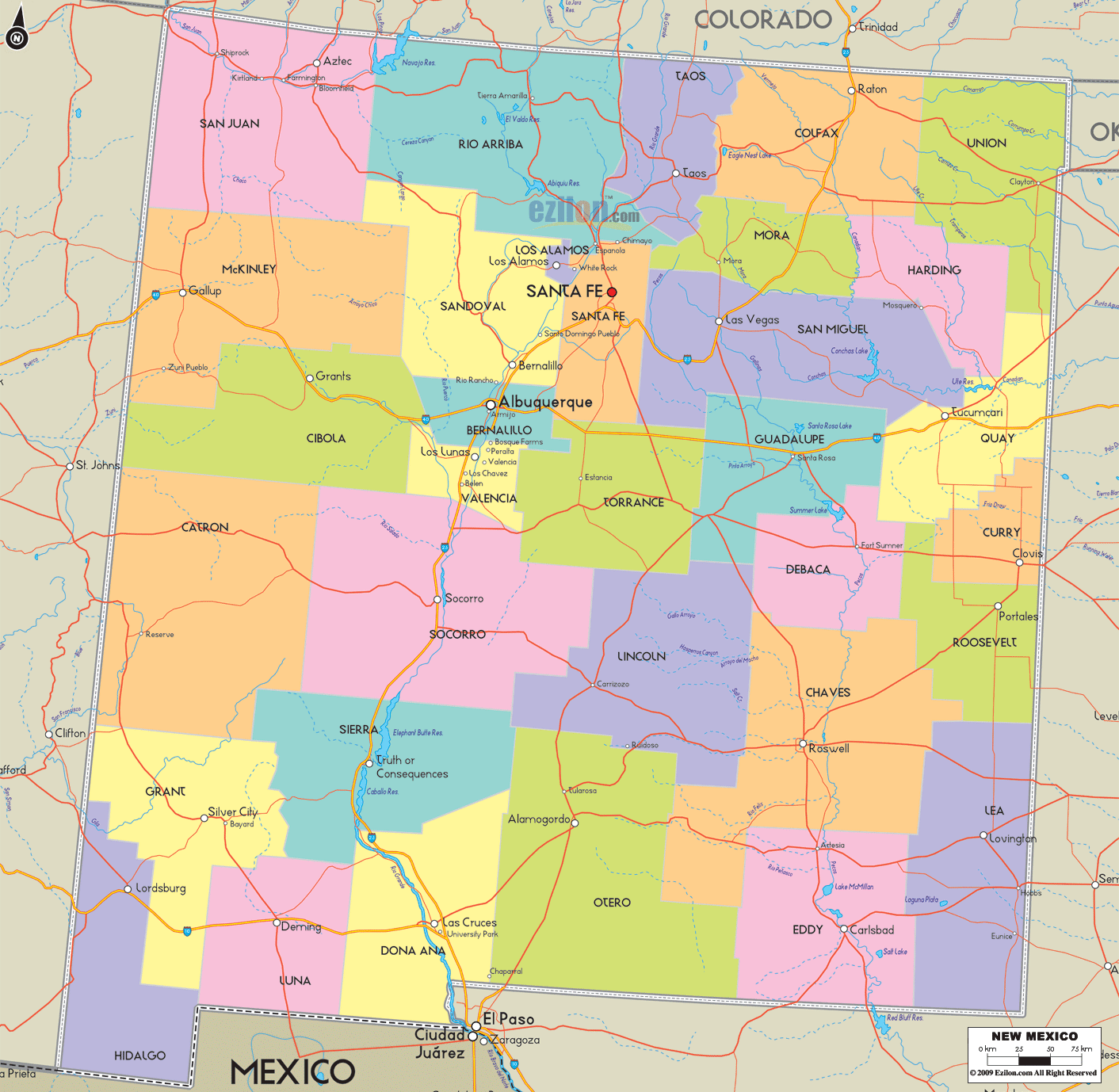
New Mexico Lakes and Rivers Map
New Mexico Physical Map
New Mexico Topographic Map
New Mexico Satellite Map
Others printable maps
New Mexico Outline Map
Blank New Mexico County Map
See also
Map of New Mexico State and its subdivision: Map of other states:- Alabama
- Alaska
- Arizona
- Arkansas
- California
- Colorado
- Connecticut
- Delaware
- District of Columbia
- Florida
- Georgia
- Hawaii
- Idaho
- Illinois
- Indiana
- Iowa
- Kansas
- Kentucky
- Louisiana
- Maine
- Maryland
- Massachusetts
- Michigan
- Minnesota
- Mississippi
- Missouri
- Montana
- Nebraska
- Nevada
- New Hampshire
- New Jersey
- New Mexico
- New York
- North Carolina
- North Dakota
- Ohio
- Oklahoma
- Oregon
- Pennsylvania
- Rhode Island
- South Carolina
- South Dakota
- Tennessee
- Texas
- Utah
- Vermont
- Virginia
- Washington
- West Virginia
- Wisconsin
- Wyoming
